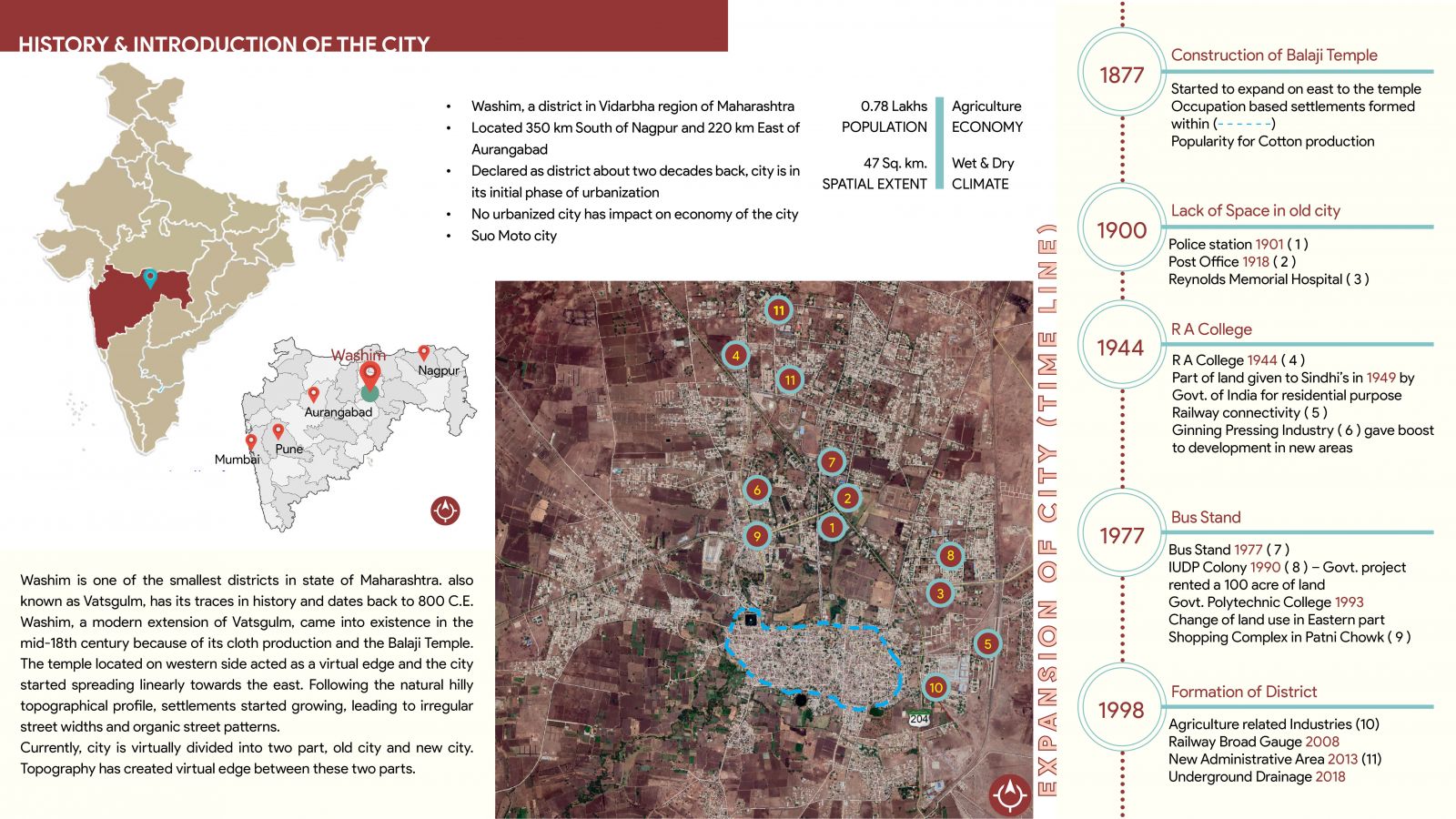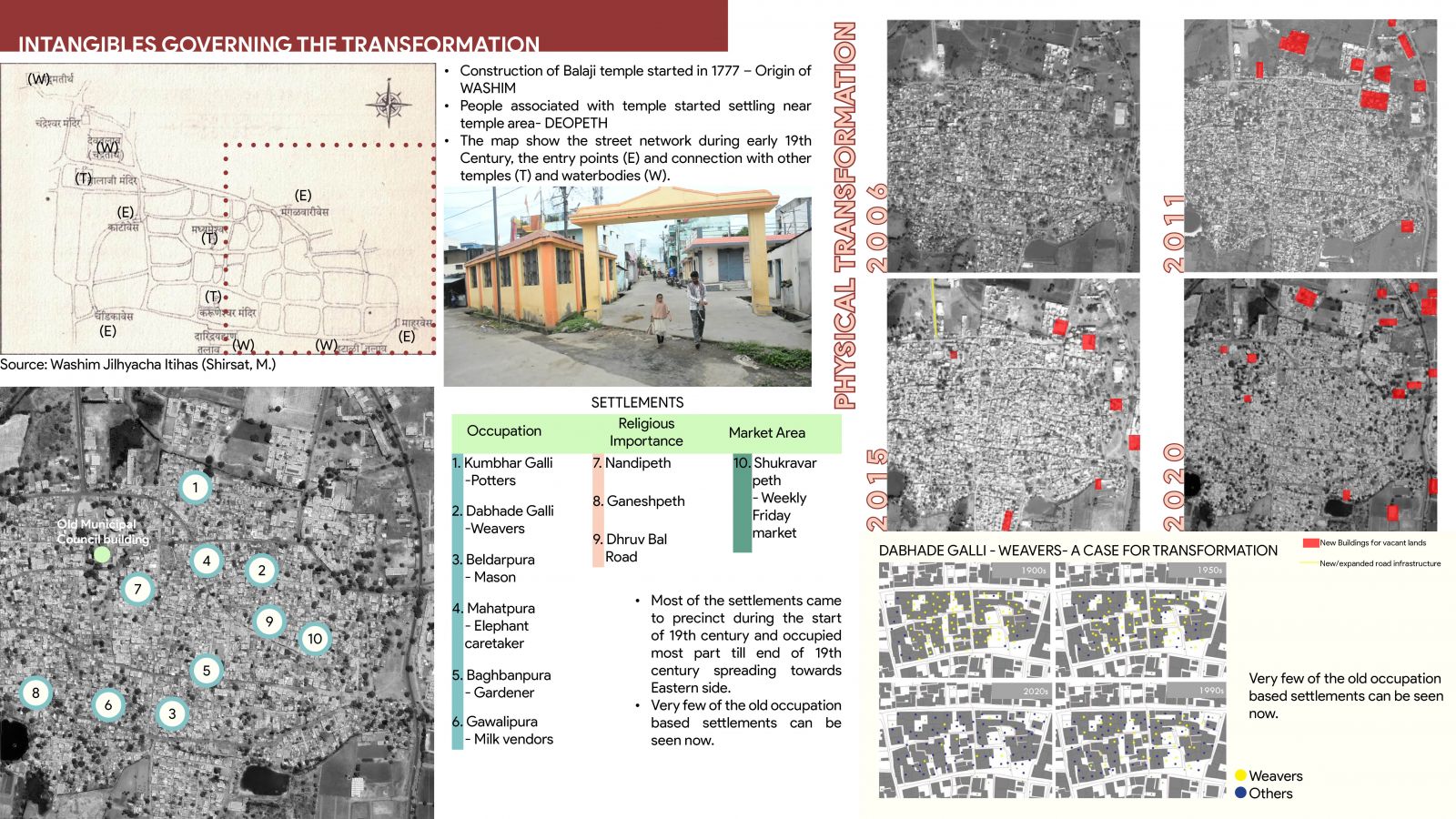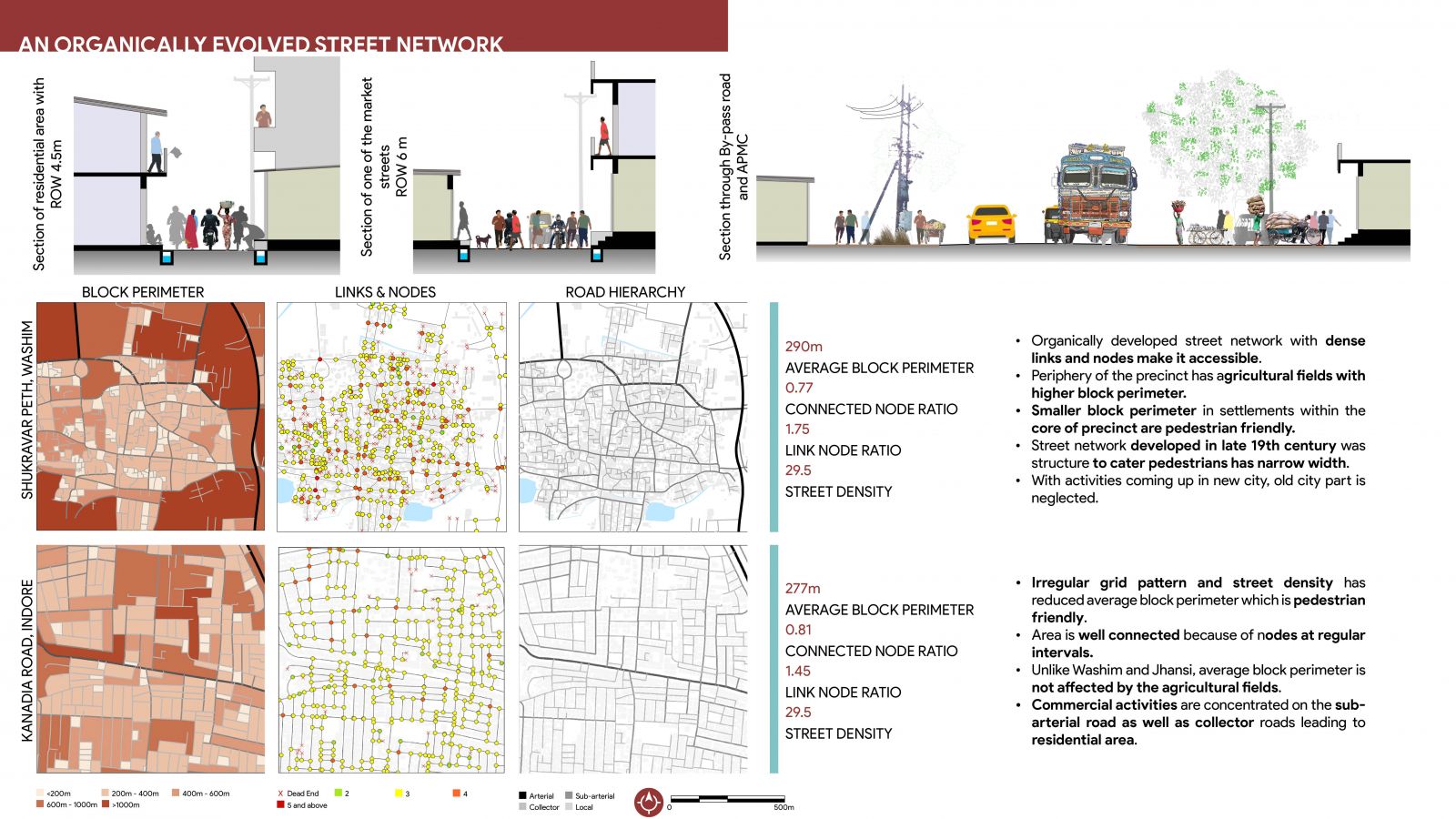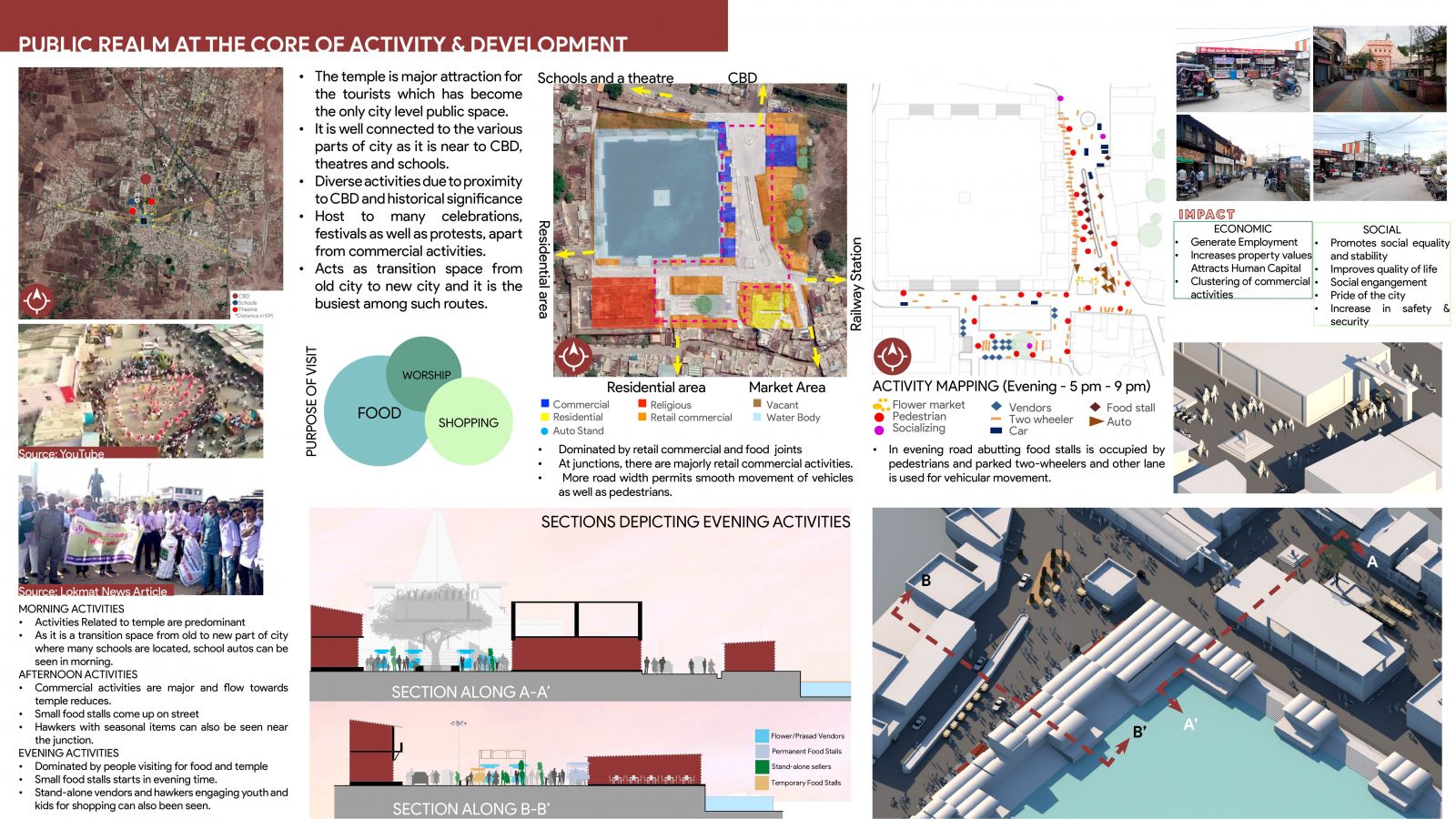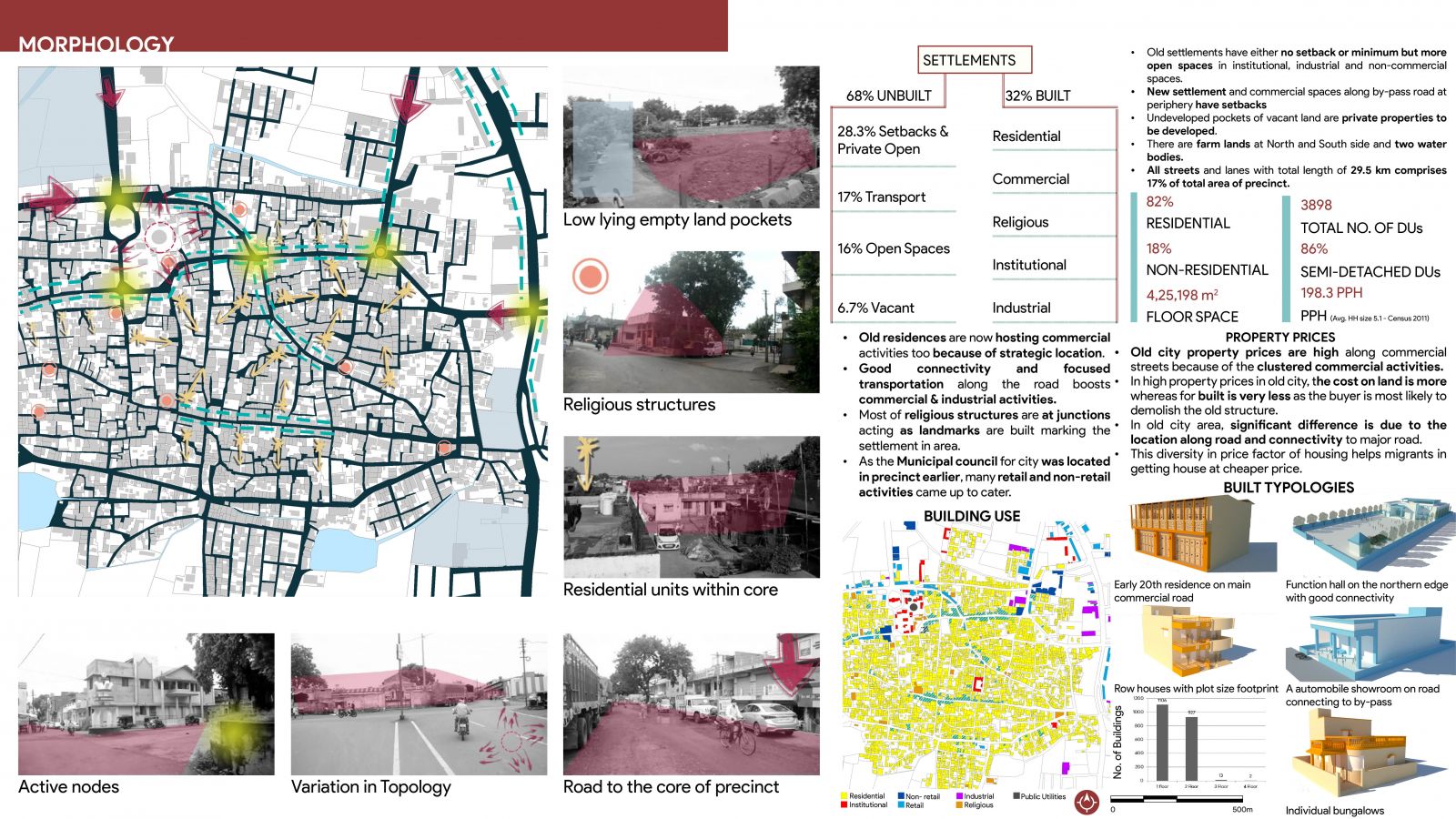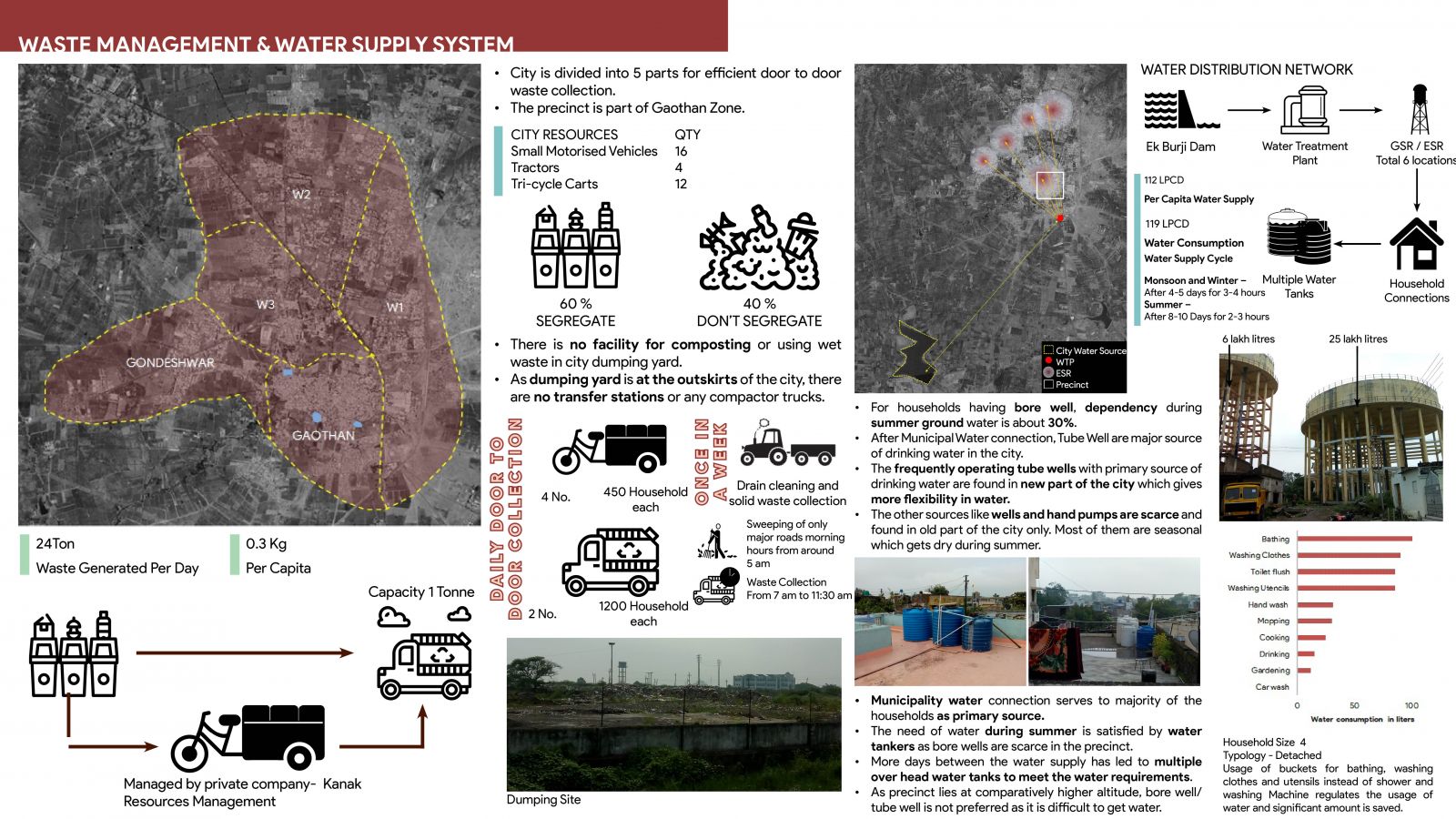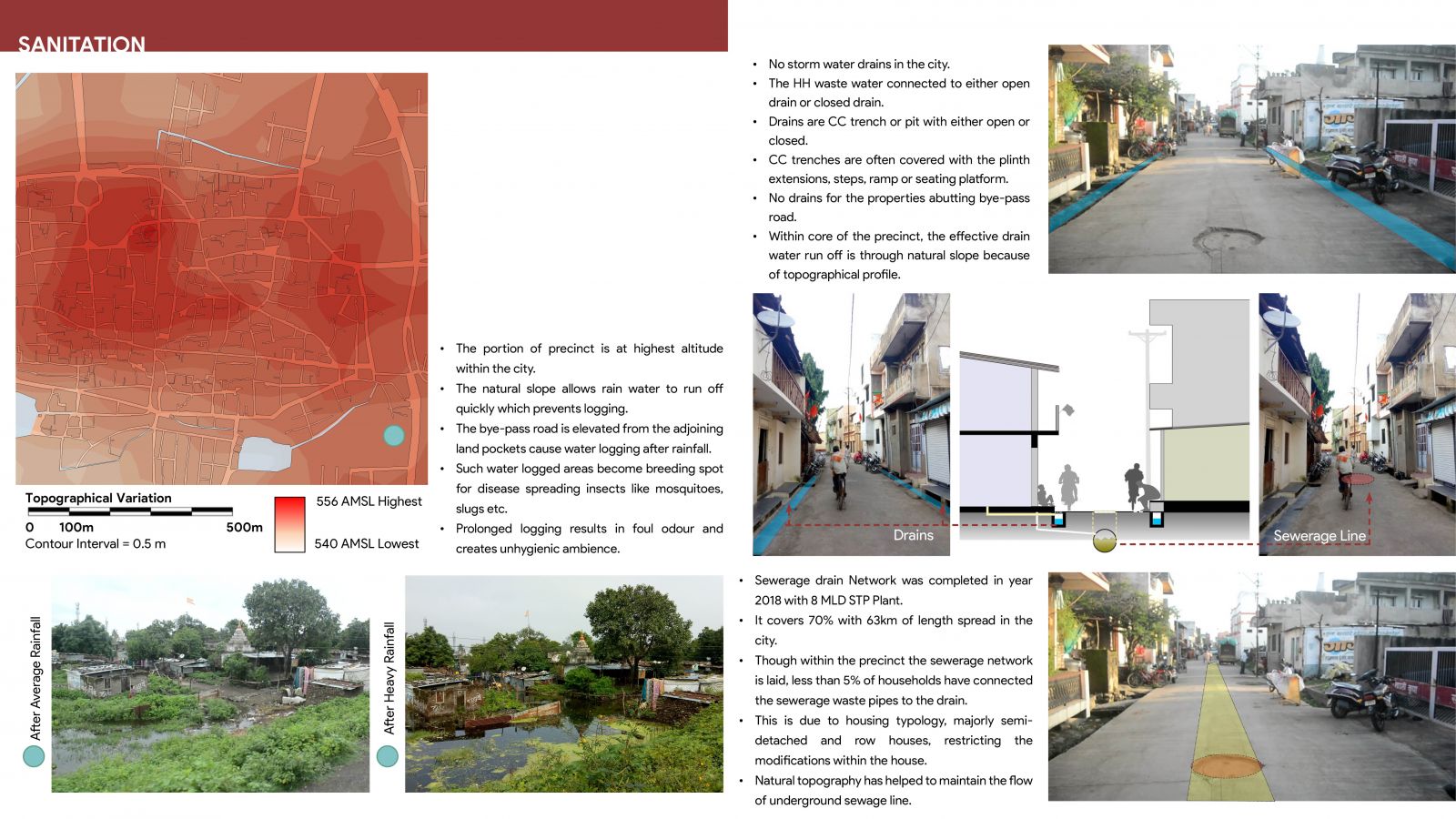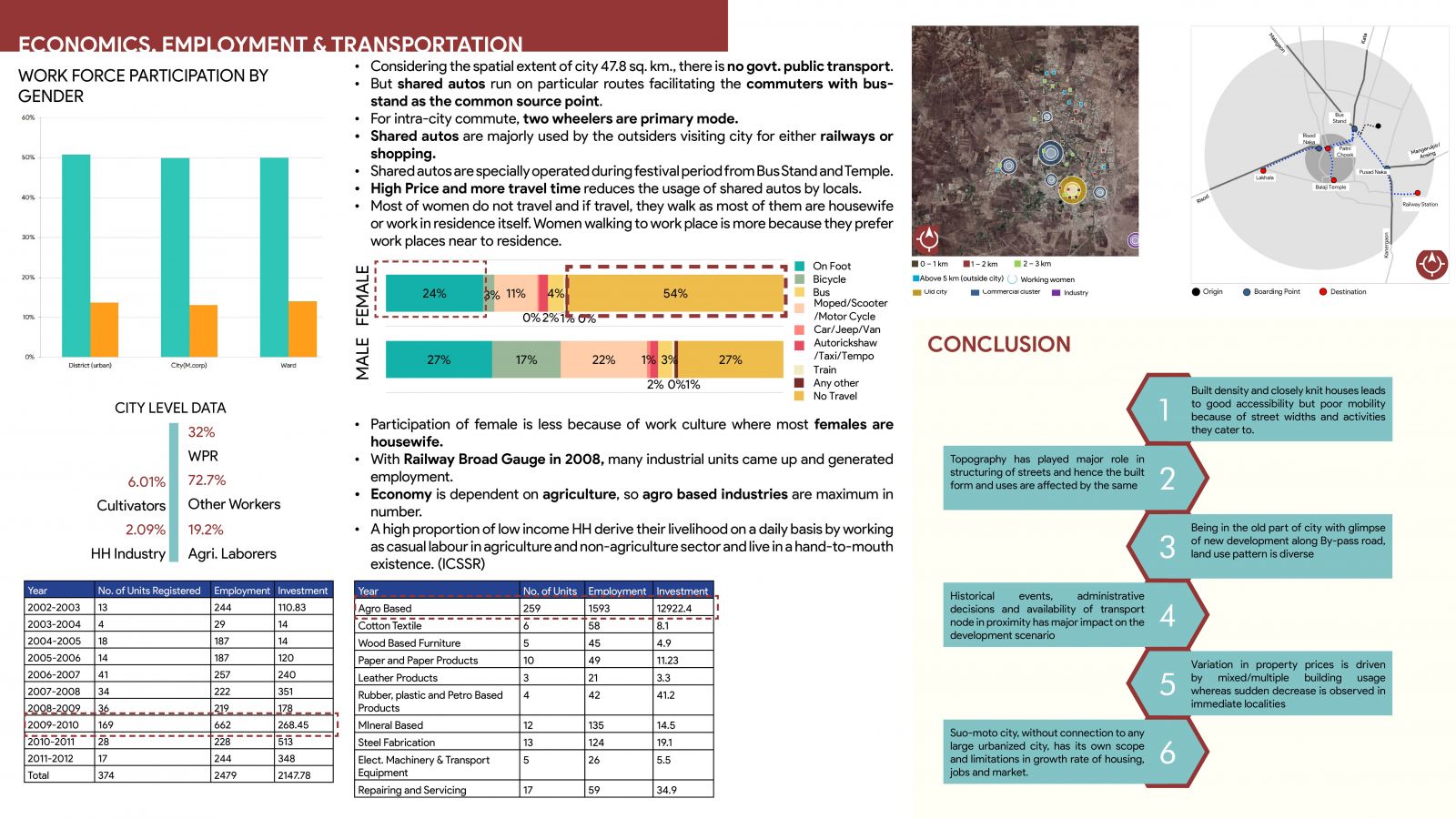Understanding the Temporal Development in Shukravar Peth
- Student LAHOTI KRUSHNA VIJAY
- Code PUD20178
- Faculty Planning
- Tutor/s Rutul Joshi,Umesh Shurpali,Ravi Sannabhadti,Anil kumar Roy,Subhrangsu Goswami,Nitika Bhakuni,Vanishree Herlekar,Rujul Dipak joshi,Arjun Joshi,Tarun Patel,Narendra Mangwani
- TA Kinjal Ribadia,Aarzoo Samani,Jacob Baby,Navnit Sourirajan,Anuja Singh,Giby Abraham,Ann Elizabeth Francis,Kaveri Bahure,Nikita Doshi,Shreesha Arondekar,Shuktika Sabharwal
The studio, Understanding the City, was designed to understand the determinants and parameters which shape the cities and are key factors for the development. To understand this, a square of 1 sq. km area was chosen having diverse characteristics to enable for studying various aspects. Personally hailing from a small town, I chose to study district to town Malegaon (Jahangir), Washim. Having done secondary schooling from Washim added to confidence of choosing the same.Studying one of the smallest districts in the state of Maharashtra brought up challenges in the pandemic. With limited online data available due to limited documentation of the city, personal interviews and extensive surveys were conducted to fulfill the need and understand the story behind diverse and historically rich precinct. In order to study the Shukravar Peth thoroughly, parameters of the survey and analysis were structured. It started with interpretation of the chosen area from satellite imagery focusing on the spaces divisions, streets and overall development. The next task revolved around the evolution in the last two decades including the tangible and intangible factors affecting it. Street network and connectivity focused on streets, their hierarchy, usage, connectivity and the activity pattern on different streets. Further, we focused on the spread of built form, land development and factors affecting it. The necessary study of building use and land use is analysed and inferences are drawn reflecting upon their strategic locations. After studying built form, a brief of city level infrastructure services and in detail for precinct was studied. For mid-term synthesis week, core and periphery of Indian cities and their behavior was analysed based upon previously studied exercises.Housing, jobs, livelihood, economy and transportation was a combined exercise involving surveys and interviews of people from different income groups and spread across the city to understand conditions, preferences and choices. Ending with end-term synthesis, housing choices in Indian cities was studied based on all the determinants studied during the semester. Link to Detailed Portfolio & Report
